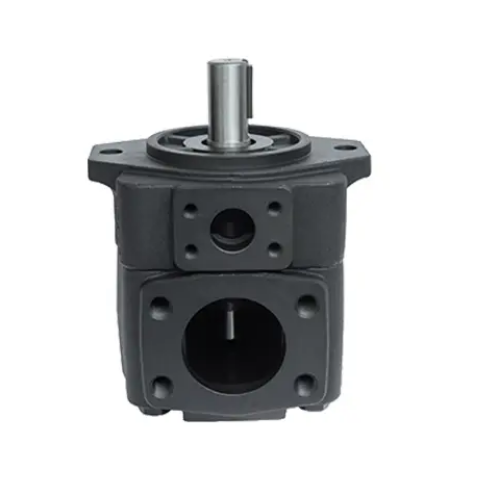The causes of vane pump failure are generally reflected in: loud noise, pressure oscillation, system pressure loss, no pressure, system oil temperature is too high, etc.
A. The main causes of noise produced by vane pumps include the following phenomena:
1. The vane pump sucks air when it is working (air enters the pump body). First check whether there are a lot of bubbles coming out of the fuel tank. If so, you can confirm that the vane pump sucks air when it works. Check whether the hydraulic oil is sufficient and whether the filter is deformed. Or the amount of oil is not enough (the most direct way is to temporarily remove the filter when the hydraulic oil is clean to see if the fault can be eliminated); then check whether there is any problem with the seal of the oil inlet pipe. After confirming that there is no problem, check the pump casing. Check whether the sealing ring at the joint is crushed when changing direction. The last step is to check whether the shaft seal is aged or damaged. If it is a new pump, after eliminating the above problems, it is possible that there are blisters in the pump body casting.
2. The pump core components may be worn. Check the pump core components to see where the problem is. Generally, it is the upper and lower oil distribution plates, rotor, stator wear, blade breakage, etc.
1. The reasons for the wear of the upper and lower oil distribution plates and rotors are as follows: A. Insufficient oil suction capacity of the vane pump (the oil suction height of the oil pump is too high: generally should not exceed 500mm. The pump body is not filled with hydraulic oil during the initial startup, and the oil inlet pipe
The hydraulic oil is seriously polluted, forming larger chemical particles, the filter is broken, and foreign matter enters the pump body, causing wear and tear.
C. The matching gap between the oil distribution plate, the rotor and the blades is too small. Because the materials of the pump core components are inconsistent for different purposes, the thermal deformation coefficients are also different. The higher the temperature, the greater the gap, which may lead to direct contact between the components. Friction (this phenomenon is manifested in a short period of time when the vane pump is first used).
D. The output shaft of the vane pump and the motor are not concentric or are against each other. This will cause the rotor of the pump core to beat and be eccentric during operation. This situation is reflected in the upper and lower oil distribution plates on one side. wear and tear.
2. The reasons for stator wear and blade breakage are as follows:
A. The system oil temperature is too high (generally controlled within 60 degrees Celsius), causing the friction surface between the stator and the blades to be unable to form a protective oil film. Direct friction between the blades and the stator (high-pressure area) during operation can easily cause wear ( The phenomenon is that there are wavy wear marks in the high-pressure area of the stator).
B. The hydraulic oil is seriously contaminated, forming larger chemical particles. If the filter is broken, foreign matter enters the pump body, causing partial breakage of the blades and wear of the stator (not just in the high-pressure area).
C. The viscosity of the hydraulic oil is too high, and the blades are not smooth when working, that is, they cannot be thrown out in time, causing uneven stress on some blades and causing breakage.
D. Improper material selection and heat treatment of the stator and blades. If the heat treatment of the blades is too hard, they will lack toughness. When the working pressure difference of the vane pump is too large, the blades may not be able to withstand the pressure impact and break (mainly reflected in the large size of the same size). For a displacement vane pump, the greater the displacement, the greater the working stress area of the blades). The broken fragments will directly damage the stator. At the same time, the high-pressure area of the stator will be worn early because the blades are too hard.
Post time: Jan-16-2024

